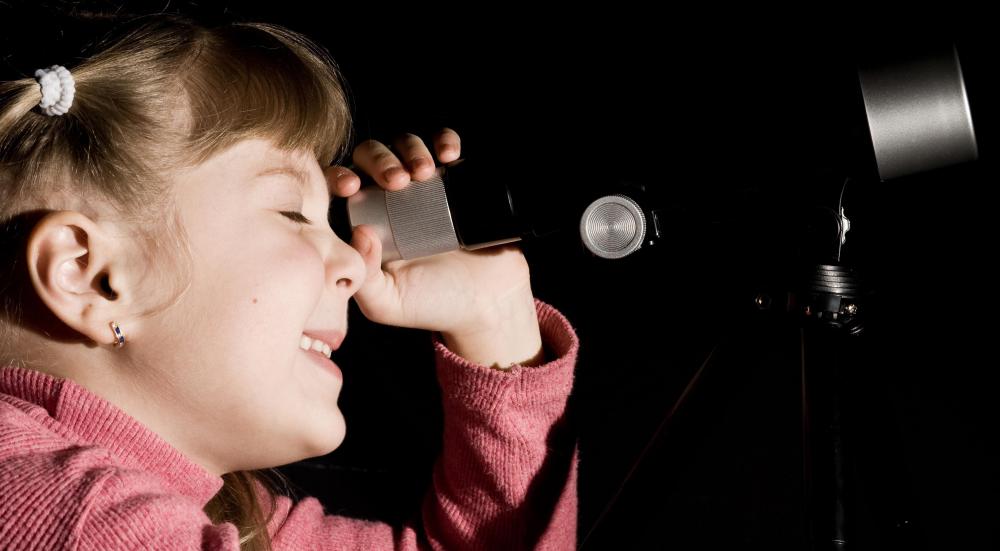At EasyTechJunkie, we're committed to delivering accurate, trustworthy information. Our expert-authored content is rigorously fact-checked and sourced from credible authorities. Discover how we uphold the highest standards in providing you with reliable knowledge.
What are the Different Types of Telescope Eyepieces?
When it comes to stargazing, telescopes require different type of eyepieces to see specific stars at varying distances, depending upon the magnification and focal length. There are seven different models of telescope eyepieces. The models are Huygenian, Kellner, orthoscopic, Plossl, Erfle, and ultrawide eyepieces.
Huygenian telescope eyepieces were the first of their kind, developed in the early 1600s by Christian Huygens. Due to the advances in technology, these eyepieces are obsolete for the most part. One version of this type of eyepiece is still used with inexpensive imported telescopes. The Huygenian eyepiece has a very small field of vision, which quickly leads to eye strain.

Kellner telescope eyepieces are used by people interested in serious astronomy, as they have an apparent field of 40 degrees. The Kellner is one of the least expensive higher powered eyepieces. When used on low to medium settings, it can accomplish a clear, bright image. This type of eyepiece is often found on small and medium sized telescopes.
Orthoscopic telescope eyepieces are recommended for planetary and lunar observation. This style eyepiece was the first of its kind, providing efficient contrast, color, and sharpness, with a wide field of vision. Due to the creation of eyepieces with an even larger field of vision, this eyepiece is losing popularity among serious astronomers.

The Plossl is a general purpose, 4-element eyepiece. It is can be used for planetary and lunar observation, as well as stargazing. The Plossl has a 50 degree field of view that projects sharp images, with good eye relief. This type of telescope eyepiece can be used by people who wear eyeglasses as long as the focal length is 0.67 inches (17mm) or greater.
Erfle telescope eyepieces are used for wide, deep space views of 60 to 70 degrees. It has a five or six element lens, making it great for viewing distant stars or planets with great clarity. This type of lens provides impressive views of the sky at low power. When switched to high power, the same view will begin to look fuzzy at the edges.
Ultrawides use six to eight lens elements to provide an 85 degree field of vision. This means that the user will actually have to move his eye around to see the whole view the telescope is projecting. Even when used at high power, the image this eyepiece projects will always be crisp. Because of the image quality and field of vision, this eyepiece can be very expensive.
AS FEATURED ON:
AS FEATURED ON:












Discussion Comments
@NathanG - Well it’s a testament to the basic operating principles behind the telescope. I think the more lenses you add the greater the magnification.
This is certainly the case with the Plossi and Erfle telescope eyepieces, although I would be the first to admit that I would be prone to use the Plossi telescope as I do wear glasses.
I should point out that even with all this magnification, stargazing is a delicate art. I’ve been out in the field with a telescope and you have to do it just right if you want to get those coveted images of the lunar surface or a good close-up of the planet Mars.
I never cease to be amazed at the clarity of the pictures which can be seen using telescope eyepieces. Telescope eyepiece magnification in most cases is often strong enough to reveal the craters on the lunar surface, not only for the orthoscopic eyepiece mentioned in the article but for others like it.
Also, think about Galileo and what he had to work with; his telescopes were far less powerful than those that we have today, yet with his simple equipment he stumbled upon one of the greatest scientific discoveries of his day, the realization that the Earth revolves around the Sun, not the other way around.
Post your comments